Ap Calc Flashcards
1/76
There's no tags or description
Looks like no tags are added yet.
Name | Mastery | Learn | Test | Matching | Spaced |
|---|
No study sessions yet.
77 Terms
sec (in terms of sine and/or cosine)
1/cos
cot (in terms of sine and/or cosine)
cos/sin
csc (in terms of sine and/or cosine)
1/sin
graph of sinx

graph of cos
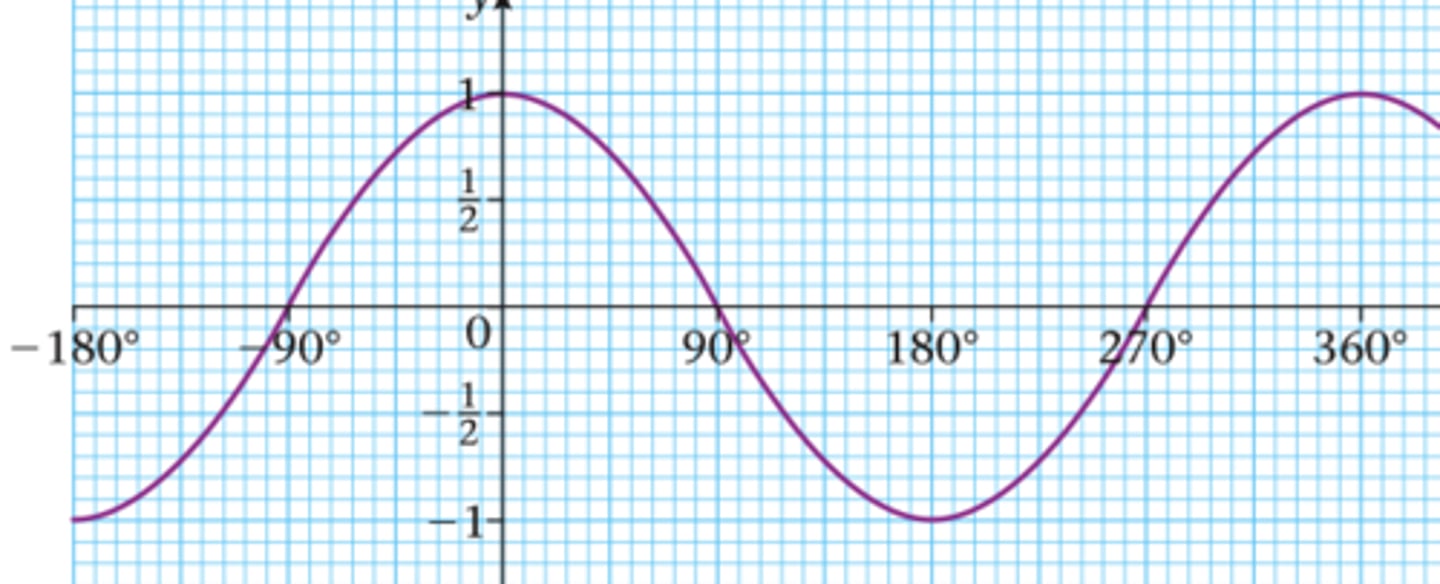
graph of tan
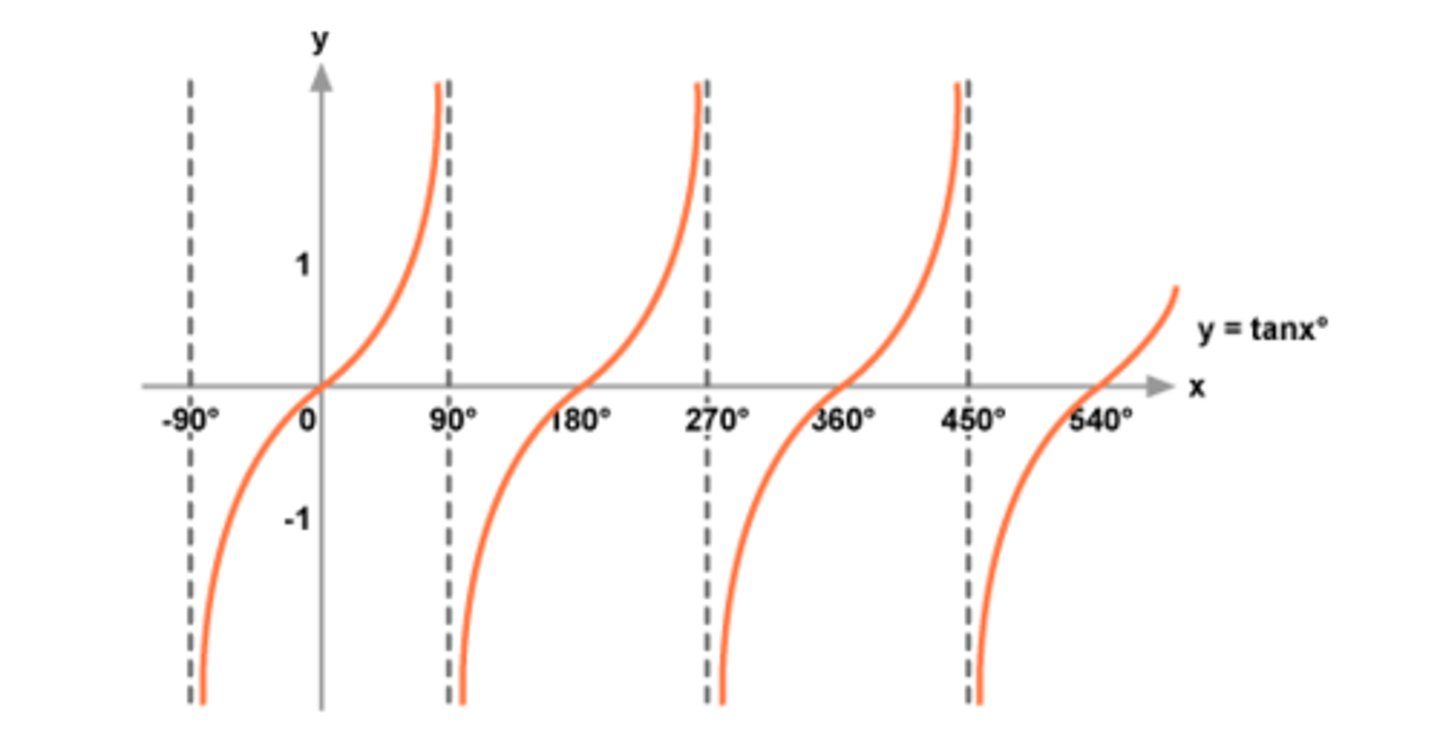
graph of sec x
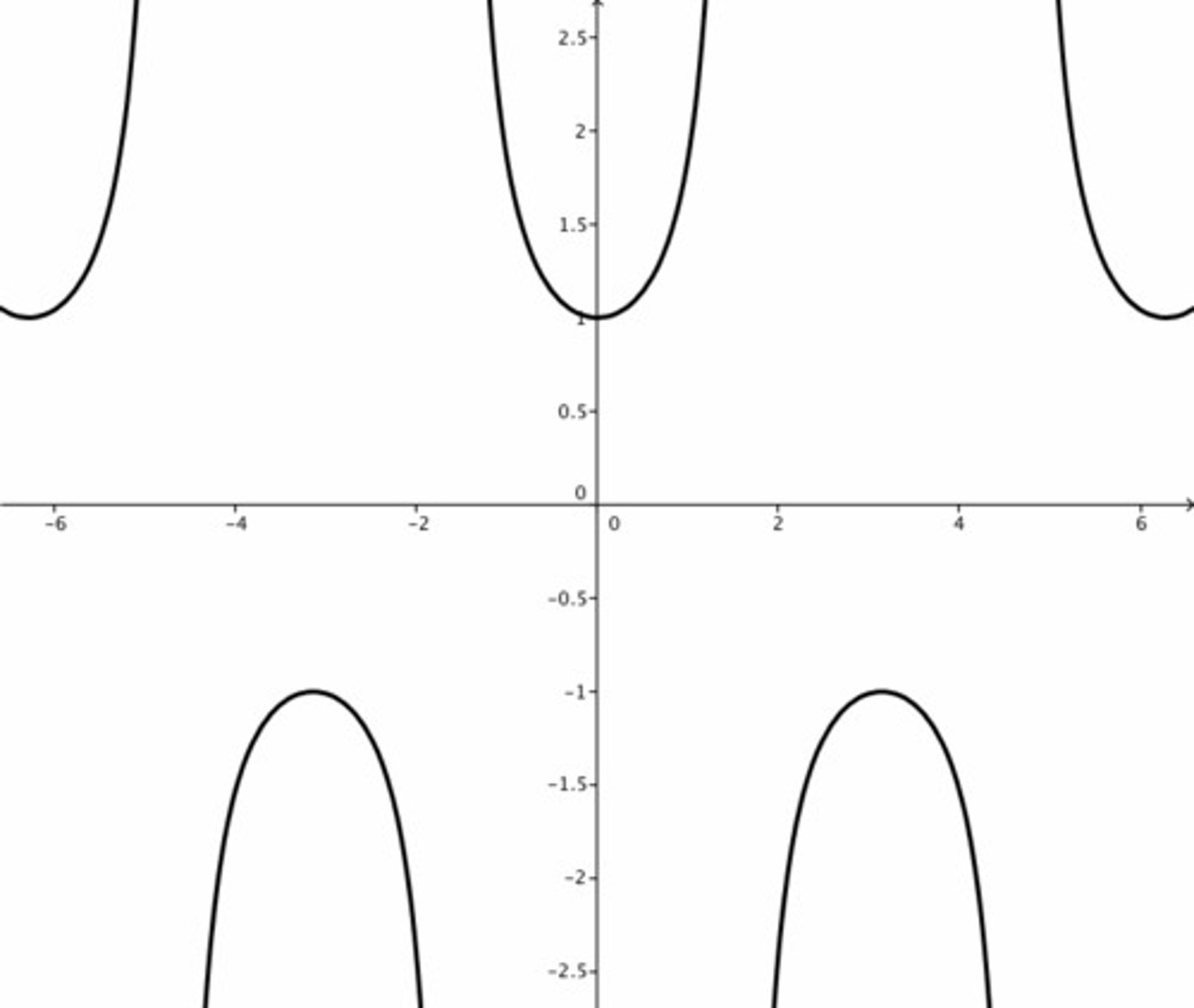
graph of lnx
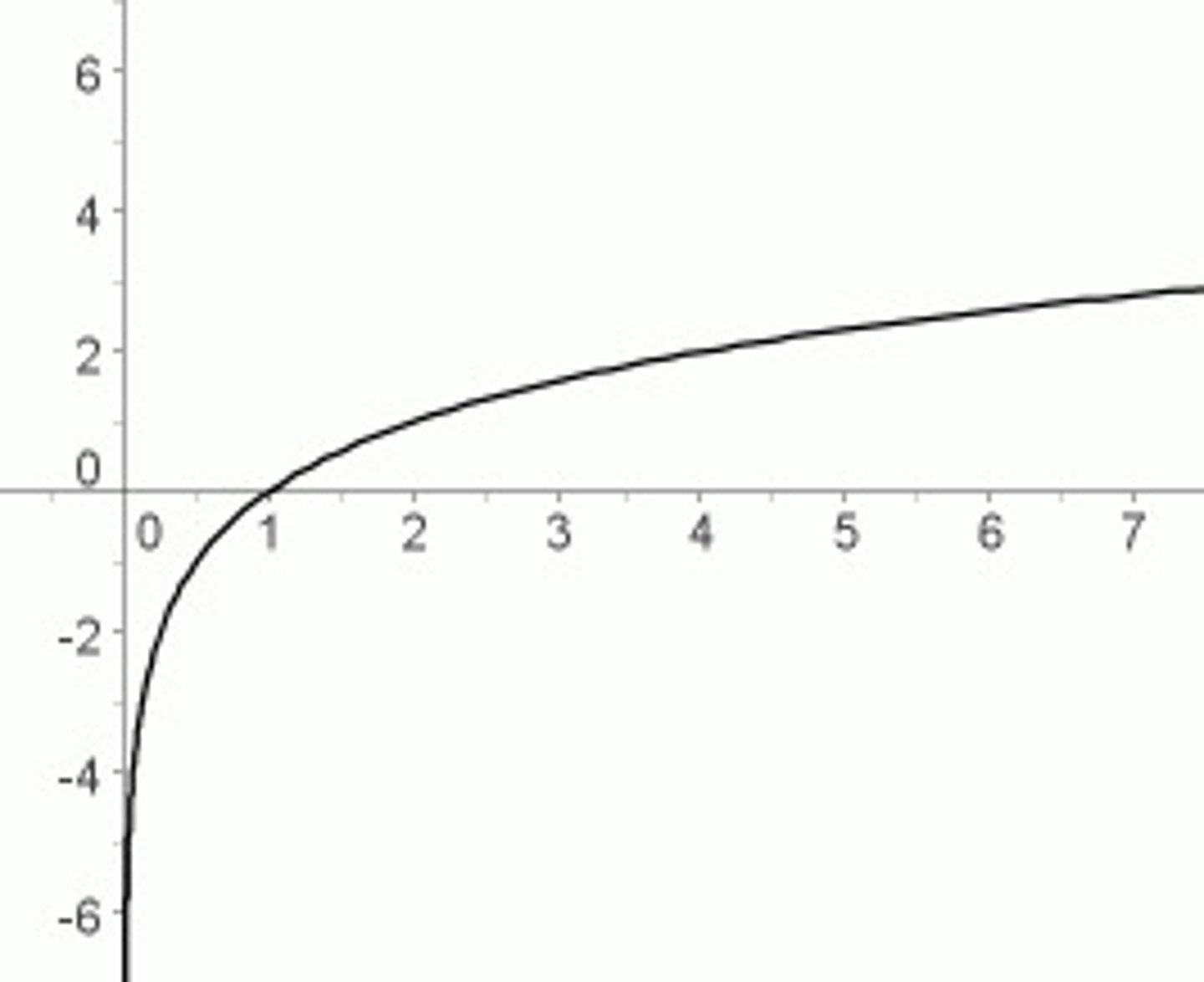
graph of 1/x
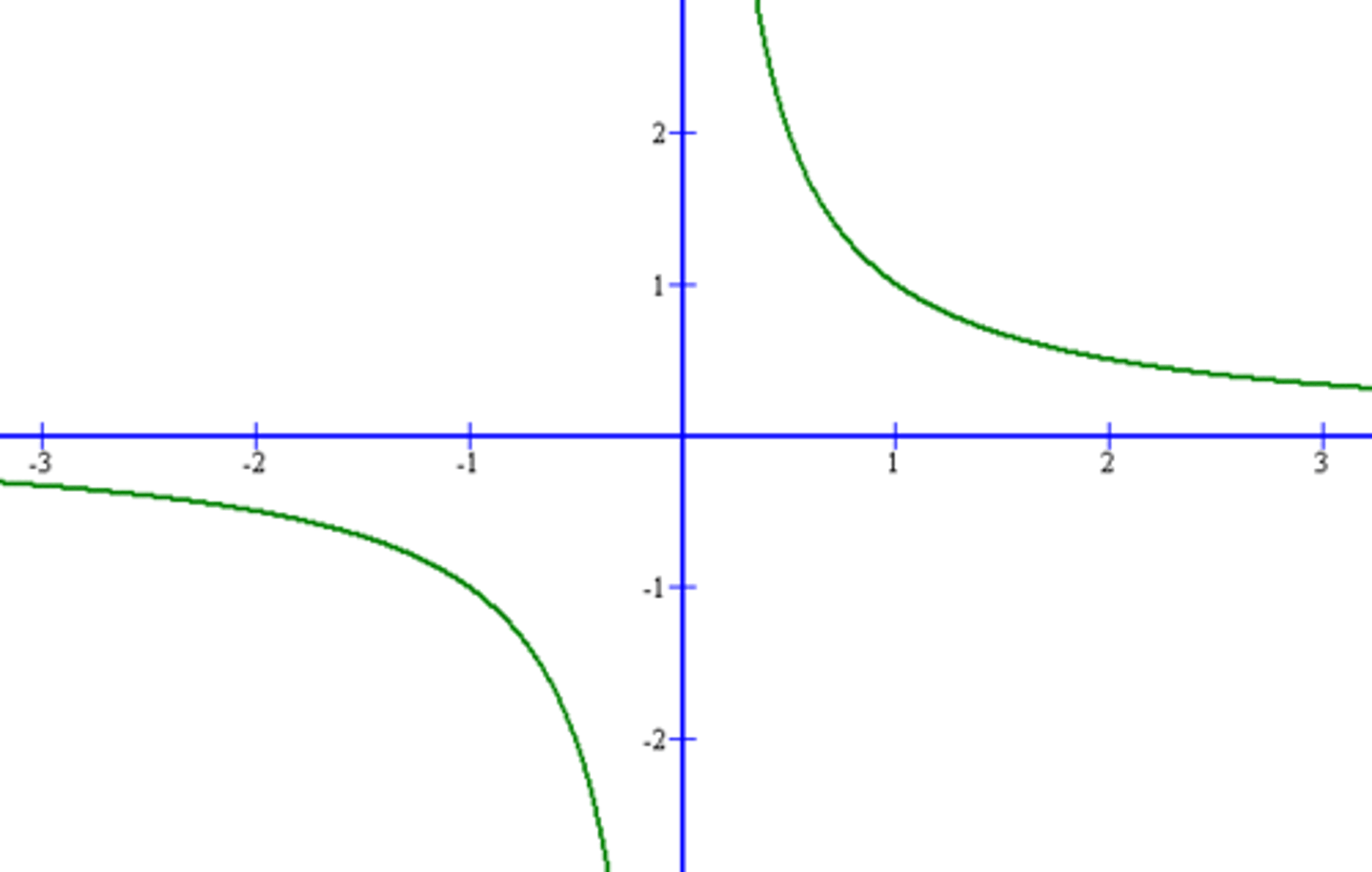
graph of sqrtx
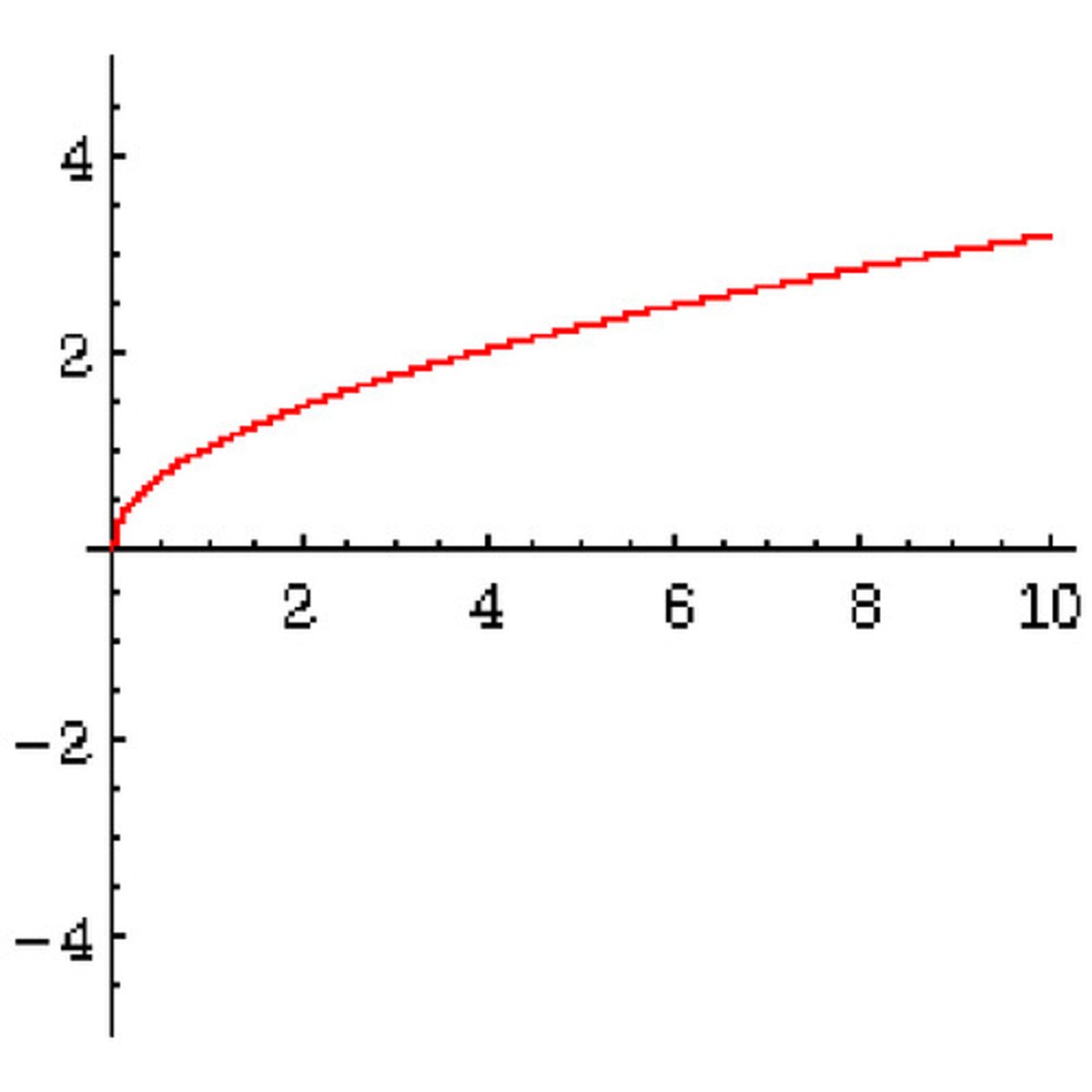
graph of sqrt 1-x^2
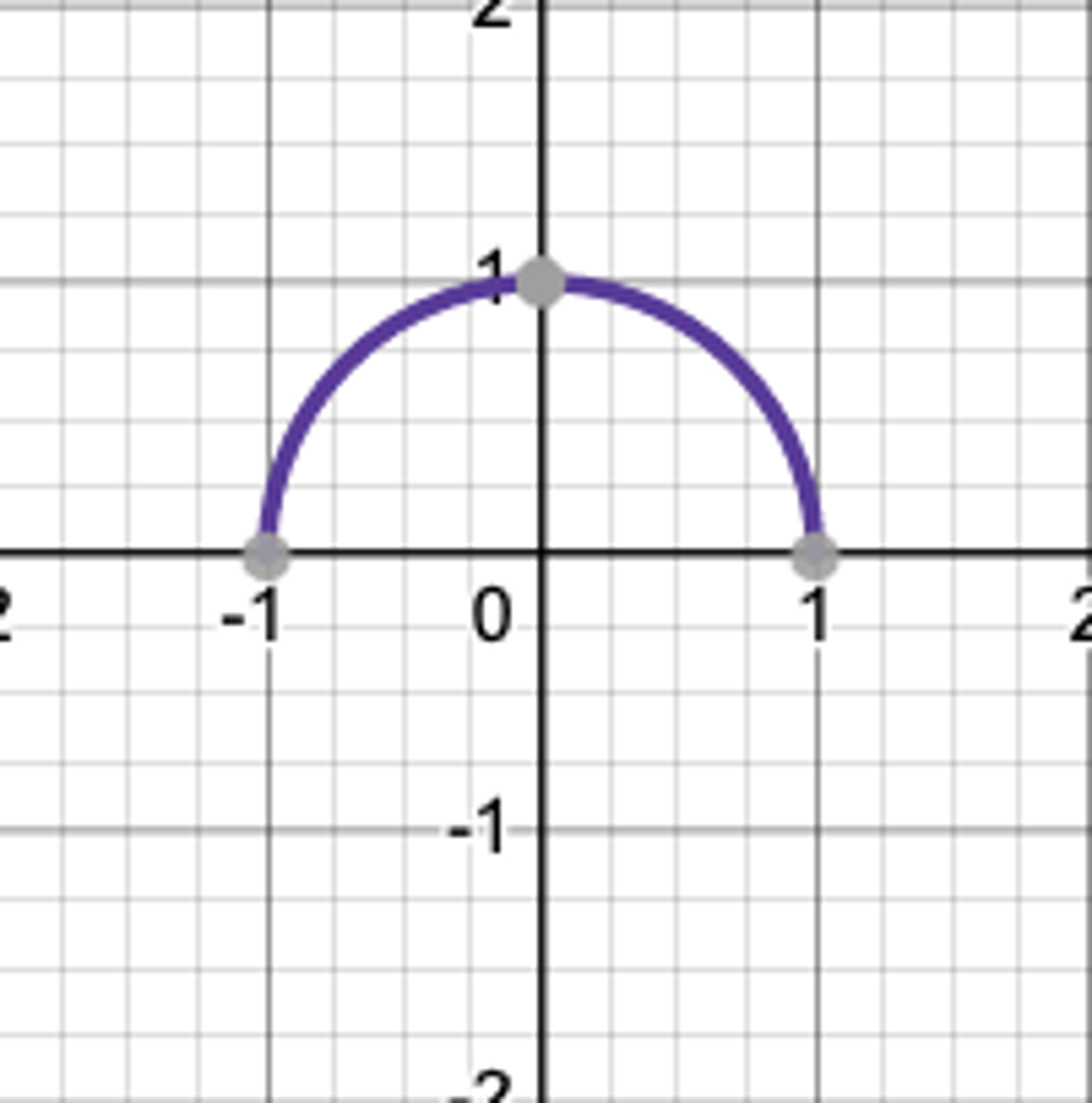
graph of abs value of x
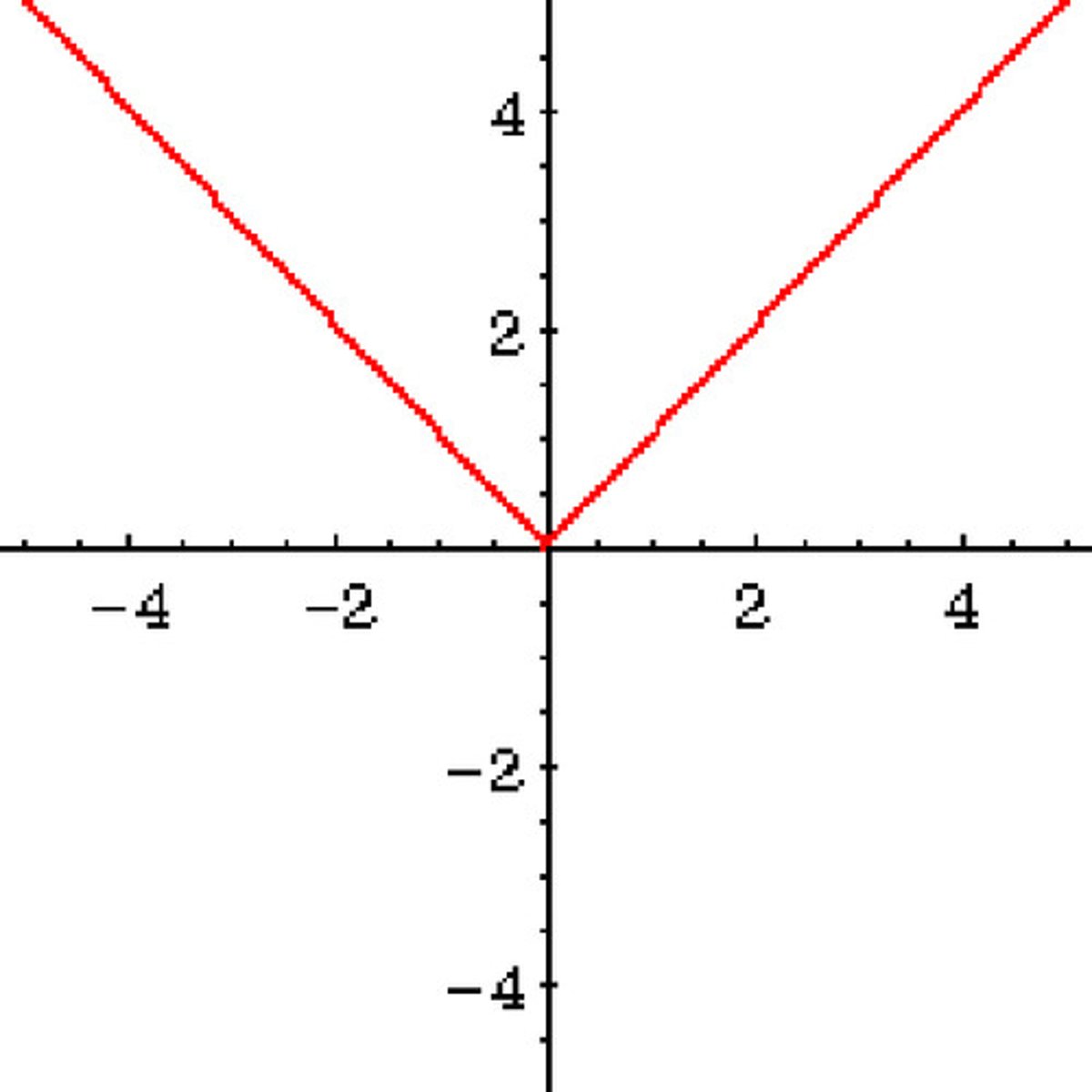
Definition: a normal line is...
the line perpendicular to the tangent line at the point of tangency
Definition: an even function is...
Symmetric with respect to the y-axis. f(-x) = f(x)
Definition: an odd function is...
symmetric with respect to the origin. f(-x)= -f(x)
two formulas for the area of a triangle
A=1/2bh
A=1/2absinC
formula for the area of a circle
A=πr²
formula for the circumference of a circle
C = 2πr
formula for the volume of a cylinder
V=πr²h
formula for the volume of a cone
V=1/3πr²h
formula for the volume of a sphere
V=4/3πr^3
formula for the surface area of a sphere
4πr²
Definition: a tangent line is...
the line through a point on a curve with slope equal to the slope of the curve at that point
Definition: a secant line is...
Line connecting two points on a curve.
antiderivative of sinx
-cosx + c
antiderivative of cosx
sinx + c
antiderivative of sec^2x
tanx + C
antiderivative of csc^2x
-cotx + c
antiderivative of secxtanx
secx + c
antiderivative of cscxcotx
-cscx + C
trapezoidial rule for approximating f(x)dx
1/2h(y0 + 2y1 +2y2+...+2yn-1+yn)
average vale of f(x) on [a,b]
1/b-a (integral from a-b) f(x)dx
power rule for antiderivatives
(x^(n+1))/(n+1) + c, (n does not equal ^-1)
constant multiple rule for antidervatives
a constant coefficient can be brought to the outside
l'hopital's rule
If the limx→c (f(x)/g(x)) is indeterminate, then the limx→c (f(x)/g(x))=limx→c(f'(x)/g'(x)), if the new limit exists
mean value theorem for integration: if f(x) is continuous on [a,b], then...
...there exists a c e [a,b] duch that f(c) = 1/b-a (integral from a- b) f(x) dx
fundamental theorem of calculus (part 1) d/dx (integral from a - x) f(t) dt =
f(x)
fundamental theorem of calculus (part 2) (integral from a - b) f(x) dx =
F(b)-F(a), where F is an antiderivative of f
a differential equation is...
Equation involving one or more derivatives
to solve a differential equation...
first separate the variables (if needed) by multiplying or dividing, then integrate both sides
exponential growth and decay: if dy/dt = ky then...
y = Ce^kt, where C is the quantity at t = 0, and k is the constant of proportionality
(integral from a - b) (rate of change) dt
the amount which that quantity has changed from t = a to t = b
Definition: f(x) is continuous at x=c when...
1. f(c) exists;
2. the limit as x approaches c of f(x) exists; and
3. the limit as x approaches c of f(x) = f(c)
limit definition of derivative
f'(x) = lim change in x->0 f(x+∆ x) - f(x)∆x
alt limit definition of derivative
limit (as x approaches c)= f(x)-f(c)/x-c
What f'(x) tells you about a function
• slope of curve at a point
• slope of tangent line
• instantaneous rate of
change
definition: average rate of change
∆y/∆x = (f(b)-f(a))/(b-a)
Power rule for derivatives
(nu^n-1)u'
d/du(sinu)
(cosu)u'
d/du(cosu)
-(sinu)u'
d/du(tanu)
sec^2u
d/du(secu)
(secutanu)u'
d/du(cscu)
-cscucotu
d/du(cotu)
csc^2u
d/du(lnu)
u'/u
d/du(logau)
u'/ulna
d/du(a^u)
(lna)(a^u)(u')
Rolle's Theorem: If f is continuous on [a, b], differentiable on (a, b), and...
...f(a) = f(b), then there exists a c e (a,b) such that f'(c) = 0
Mean Value Theorem for Derivatives: If f is continuous on [a, b] and differentiable on (a, b), then...
there exists a value of c e (a,b) such that f'(c) = f(b)-f(a)/b-a
Extreme Value Theorem: If f is continuous on a closed interval, then...
...f must have both an absolute maximum and an absolute minimum on the interval
Intermediate Value Theorem: If f is continuous on [a, b], then...
...f must take on every y-value between f(a) and f(b)
If a function is differentiable at a point, then...
...it must be continuous at that point (differentiability implies continuity)
4 ways in which a function can fail to be differentiable at a point
discontinuity
corner
cusp
vertical line tangent
definition: a critical number (aka critical point or critical value) of f(x) is...
...a value of x in the domain of f at which either f'(x) = 0 or f'(x) does not exist
if f'(x) > 0, then...
f(x) is increasing
if f'(x) < 0, then...
f(x) is decreasing
if f'(x) = 0, then...
f(x) has a horizontal tangent
definition: f(x) is concave up when...
f'(x) is increasing
definition: f(x) is concave down when...
f'(x) is decreasing
f''(x) > 0
concave up
f''(x) < 0
concave down
a point of inflection is a point on the curve where...
concavity changes
To find a point of inflection
Look for where f'' changes signs, or, equivalently, where f' changes direction.
To find extreme values of a function, look for where...
f' is 0 or und (critical numbers)
at a max, the value of the derivative
f' changes from pos to neg (first deriv test)
at a min, the value of the derivative
f' changes from neg to pos(first deriv test)
second derivative test: if f' = 0 and...
f'' < 0, then f has a max; if f''>0 then f has a min